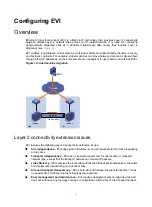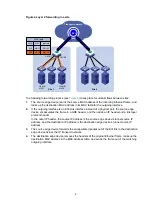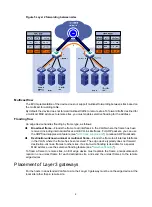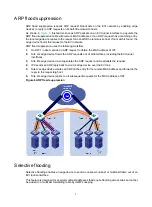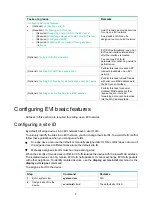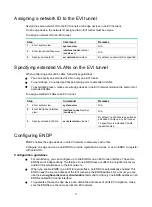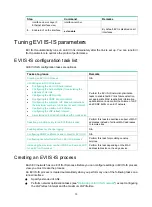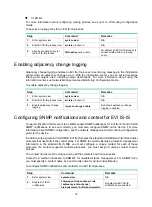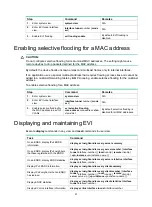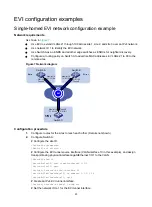
10
Configuring an EVI tunnel
Step Command
Remarks
1.
Enter system view.
system-view
N/A
2.
Create an EVI
tunnel interface and
enter tunnel
interface view.
interface tunnel
number mode evi
By default, no tunnel interface exists.
The endpoints of a tunnel must use the same tunnel
mode.
For more information about this command, see
tunneling commands in
Layer 3—IP Services
Command Reference
.
3.
Specify a source IP
address or interface
for the tunnel.
source
{
ipv4-address
|
interface-type
interface-number
}
By default, no source IP address or source interface
is specified for any tunnel.
The source interface can be a Layer 3 Ethernet
interface, Layer 3 aggregate interface, VLAN
interface, or Layer 3 loopback interface. For more
information about the
source
command, see
tunneling commands in
Layer 3—IP Services
Command Reference
.
EVI uses the specified address or the primary IP
address of the specified source interface as the
source IP address of tunneled packets on the
transport network.
EVI networks can share a tunnel source IP address
or interface.
You must specify the same source IP address or
interface for tunnels that use the same
transport-facing physical interface.
IMPORTANT:
To avoid forwarding failure, do not use a GRE tunnel
interface or its IP address (configure with the
ip
address
command in tunnel interface view) as the
source interface or IP address of an EVI tunnel. For
more information about GRE, see
Layer 3—IP
Services Configuration Guide
.
4.
Configure the EVI
link keepalive
interval and the
maximum number
of keepalive
transmissions.
keepalive
[
seconds
[
times
] ]
By default, a keepalive packet is sent every five
seconds and the maximum number of transmissions
is two.
If no reply is received from the remote end on an EVI
link after the maximum number of keepalive
transmissions is reached, the local end considers the
EVI link as having failed.
5.
(Optional.)
Generate a GRE
key for tunneled
packets based on
their VLAN IDs.
gre key
vlan-id
By default, EVI tunneled packets do not contain a
GRE key.
The GRE key setting must be the same across an
EVI network. Perform this step if any remote edge
devices generate VLAN ID-based GRE keys for EVI
tunneled packets.
NOTE:
In addition to the EVI-specific commands described in this section, you can configure generic tunnel
interface commands on an EVI tunnel interface. These tunnel commands and tunneling basics are
described in the tunneling configuration in
Layer 3—IP Services Configuration Guide
.






